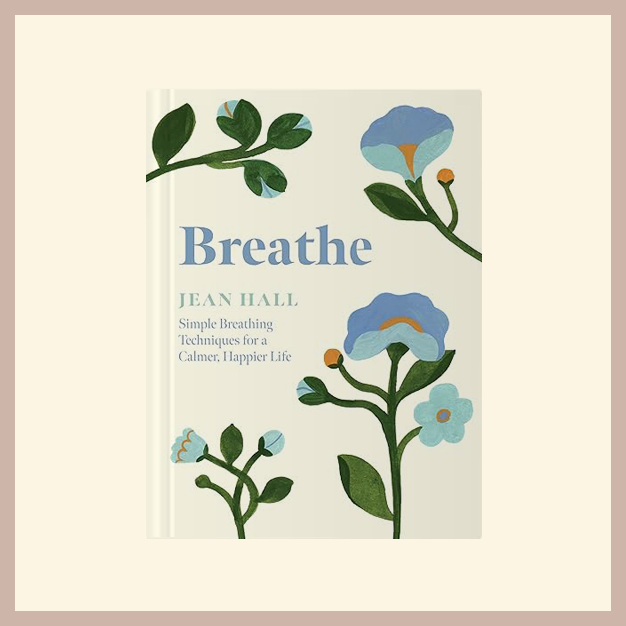
The wonder of breath. Our true companion for life.
Pranayama Practices
I'm a qualified Breath Coach, trained by Lucas Rockwood at The Yoga Teachers College in Barcelona. I use a range of breathing techniques in my own practice and with others to support well-being. Whether or not yoga is part of your routine, breath is a powerful tool—and I’m passionate about helping people harness its transformative benefits.
Donna Farhi’s Yoga, Mind, Body & Spirit describes The Seven Moving Principles, which guide all yoga practices. The first principle is to breathe. From our development as a single cell to birth, breathing becomes a quiet, rhythmic thread that guides us.
Discover the power of breathing practices and their benefits through the following exercises. Start by mastering deep belly breathing before trying the others. Use the videos for guidance or practice gently on your own. Enjoy!
Disclaimer: If you have any health conditions, consult your doctor or medical practitioner to ensure breathing practices such as these are suitable for you. If you choose to follow any of these breathing techniques you agree that you do so by your own free will.
Kumbhaka Pranayama
Triangle Breathing 4:4:8
Kumbhaka is the retention of breath in the practice of pranayama. Also known as Triangle Breathing. Great one for calming the nervous system.
There are two types of kumbhaka:
Antara Kumbhaka = retention after the inhale
Bahya (Bahir) Kumbhaka = retention after the exhale
This practice uses Antara to the count of 4 in, 4 hold, 8 out. It may be useful for you to picture an inverted triangle in your mind’s eye.
GUIDANCE FOR BREATHING PRACTICE
1. Sit comfortably with your spine upright and relaxed.
2. Gently bring your attention to your natural breath—simply observe without changing it.
3. Take a deep breath in, and exhale fully, releasing all the air from your lungs.
4. Close your eyes if you feel comfortable, or keep them open and follow the visual guide until you're familiar with the rhythm.
5. Inhale slowly through your nose to a count of 4.
6. Hold your breath for a count of 4, without any strain.
7. Exhale gently through your mouth to a count of 8.
This video includes 3 full rounds of this breathing pattern. Start slow, and with regular practice, gradually build up to 6 rounds.
Sama Vritti
Box Breathing 4:4:4:4
Sama Vritti pranayama practice is also known as equal breath or box breathing.
Sama = even, smooth, equal
Vritti = fluctuations or modifications
It’s thought to be a soothing and balancing practice which helps calm the body and mind. Navy SEALS are said to use this one.
Benefits are said to include awareness of breath and prana flow.
GUIDANCE FOR BREATHING PRACTICE
Find a comfortable seated position with your spine upright. Rest your hands on your legs, palms facing upward. Gently bring your attention to your natural breath—just observe it without changing anything. If it feels comfortable, close your eyes to help focus inward. Exhale fully through your nose, emptying your lungs completely. Let’s begin.
Box Breathing (4-4-4-4):
1. Inhale through your nose for a count of 4.
2. Hold the breath at the top for a count of 4, without straining.
3. Exhale through your nose for a count of 4.
4. Hold the breath at the bottom for another count of 4.
That’s one full round. Aim to keep the breath smooth and even—try to maintain the same quality of breath at the beginning, middle, and end of each round.
Start with 3 rounds, then pause. Notice any sensations in the body—neutral, pleasant, or unpleasant. When you're ready, you can repeat the practice, building up to 5 rounds.
Nadi Shodana
Alternate Nostril Breathing 5:5
Nadi Shodana or “alternate nostril breathing” is my go to.
A simple but powerful technique that settles the mind and body bringing your nervous system into balance. This practice is said to balance the flow of vital energy, prana, through the Ida nadi (left nostril/moon) and the Pingala nadi (right nostril / sun). The idea is to facilitate the movement of prana through the central energy axis, the sushumna.
There are said to be 72,000 nadis (channels) within the body.
GUIDANCE FOR BREATHING PRACTICE
Sit comfortably with your spine upright and shoulders relaxed.
Rest your left hand in your lap or on your left knee, palm facing upward.
Bring your right hand to your face. Use your right thumb to gently close your right nostril.
Let your ring finger rest lightly on the left nostril (but keep it open for now).
Gently close your eyes and bring your attention inward. Let’s begin.
Breath Cycle (1 Round):
1. Inhale slowly and steadily through the left nostril for a count of 5.
2. Now close the left nostril with your ring finger—both nostrils are gently closed. Hold the breath briefly (no strain).
3. Release your thumb and exhale through the right nostril for a count of 5.
4. Pause briefly at the end of the exhale, with the right nostril open.
5. Inhale through the right nostril for a count of 5.
6. Gently close the right nostril with your thumb. Both nostrils are closed again. Hold the breath briefly.
7. Release the ring finger and exhale through the left nostril for a count of 5.
8. Pause briefly at the end of the exhale with the left nostril open.
That completes one full round of Nadi Shodhana.
Aim for 5 gentle rounds to start.
After completing the rounds, lower your hand and rest both hands in your lap.
Sit quietly for a few moments and notice any sensations—physical, emotional, or energetic.
Stay gentle, relaxed, and attentive throughout. Let the breath guide you.
Recommended books on breathwork
-

Breath by James Nestor
-

Breathe by Jean Hall
-

A Life Worth Breathing by Max Strom